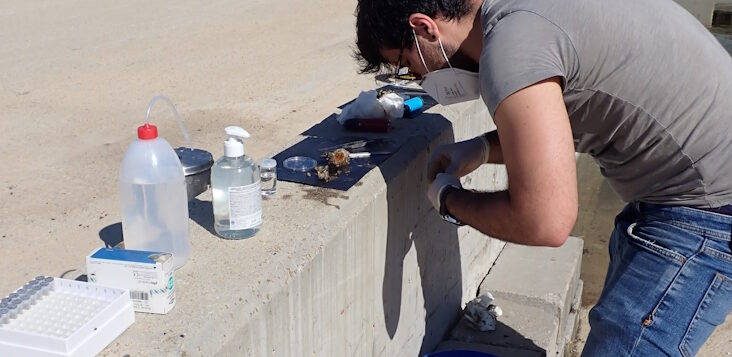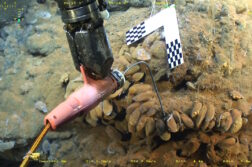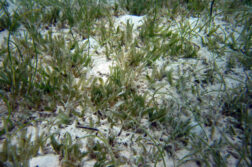The research reveals the complexity and adaptability of the microbial communities of a marine invertebrate: the ascidian Styela plicata. This microbiome variability helps explain its great capacity for proliferation, even in polluted environments.
The scientific article “Multidimensional variability of the microbiome of an invasive ascidian species” has been published in the journal iScience this September. It is part of a doctoral thesis co-supervised by Drs. Marta Pascual and Carles Carreras, from the University of Barcelona (UB), and Dr. Xavier Turon from the Center for Advanced Studies (CEAB-CSIC).
The article reveals results of an investigation that began in 2020 with the collection of samples of Styela plicata, and water, in several Catalan ports (Barcelona, Blanes and Vilanova i la Geltrú).
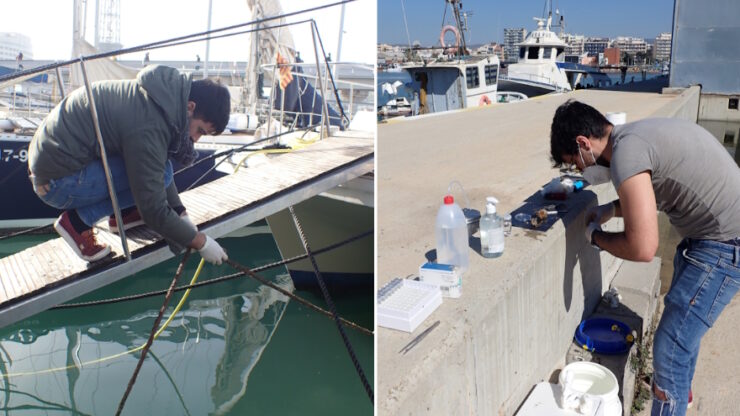
Styela plicata is a type of ascidian or sea squirt, a group of invertebrates that live attached to substrates on the seabed and feed by filtering water. It is an invasive species that has spread worldwide, especially in ports and nearby coastal areas, harming native life.
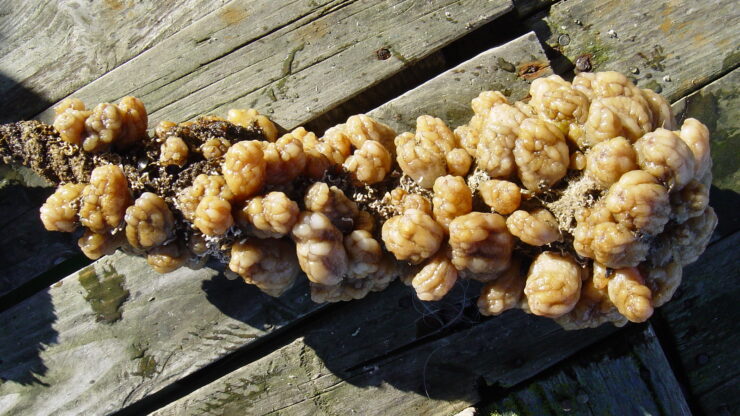
Using molecular techniques, the scientific team has analysed the composition and functionality of its microbiome, in different tissues and stages of development.
Carles Galià-Camps, UB’s doctoral student and first author of the article explains that “this is one of the novelties of the research. Until now, studies used to focus on the most external part. The analysis of the tunic (that covers the sea squirt), the gills and the digestive tube (internal tissues) has surprised us: we have discovered great differences depending on the tissue, both in the composition and functionality of the microbiome, evidencing a high specialization”.
The comparison between juvenile and adults has also revealed important differences. It has been found a correlation between the microbiome and heavy metals, especially in adults, who bioaccumulate these pollutants present in water. This fact suggests that the communities of microorganisms and their functionality change during the development of the ascidian, responding increasingly better to the conditions of the environment.
Scientists have also found differences between the specimens depending on the port in which they were collected (even being very close). That suggests an adaptation to the specific conditions of each place.
Xavier Turon, CEAB-CSIC’s researcher and article’s co-author, explains: “the diversity and specialization of the microbiome is an advantage, since it allows a quick and successful adaptation of these animals, even in stressful and polluted environments. Just as it happens with humans, we see that the microbiome is very important for health and for success in adaptation and evolution”.
The research results suggest that microbiome variability plays a crucial role in the species’ ability to colonize new environments and cope with changing conditions. This highlights the importance of taking it into account in the study and surveillance of potentially invasive species.


